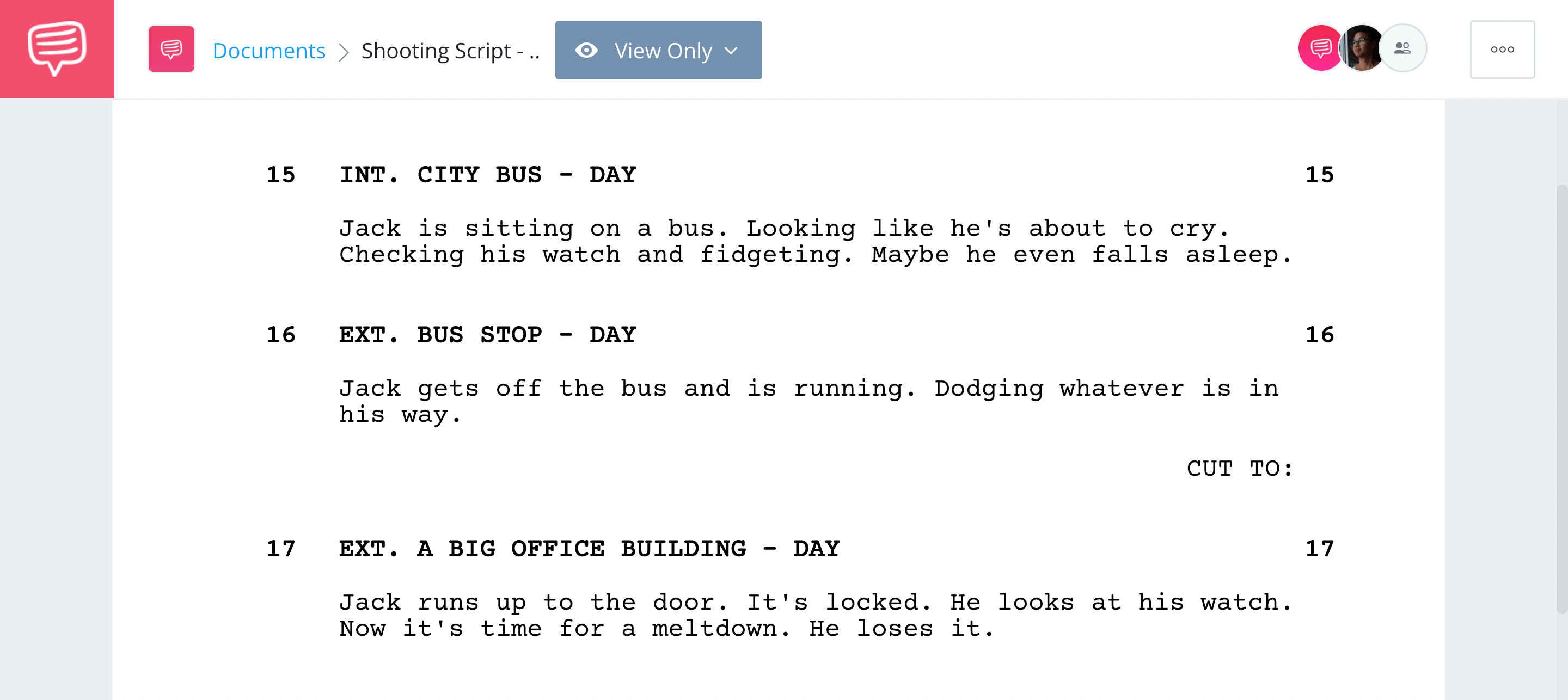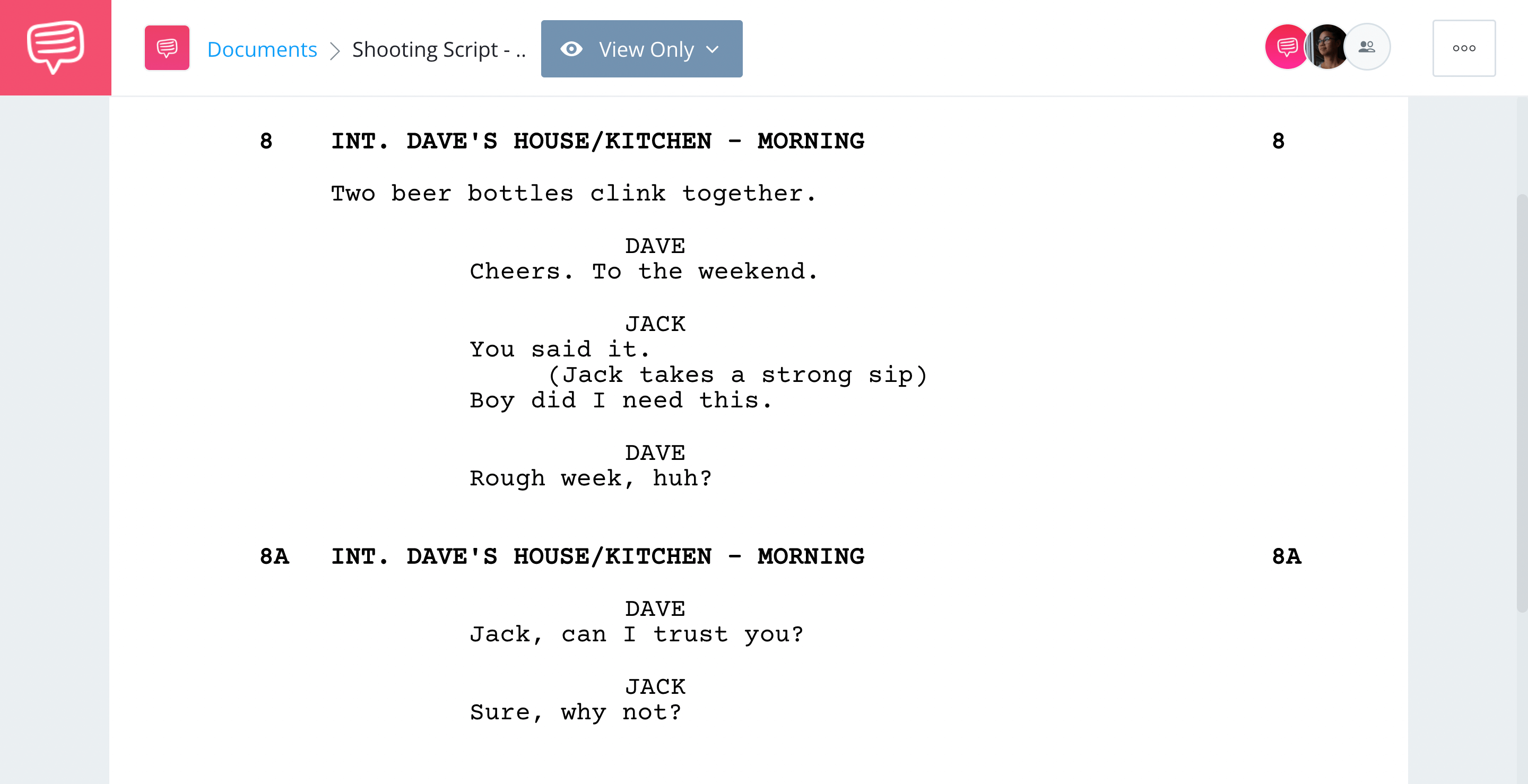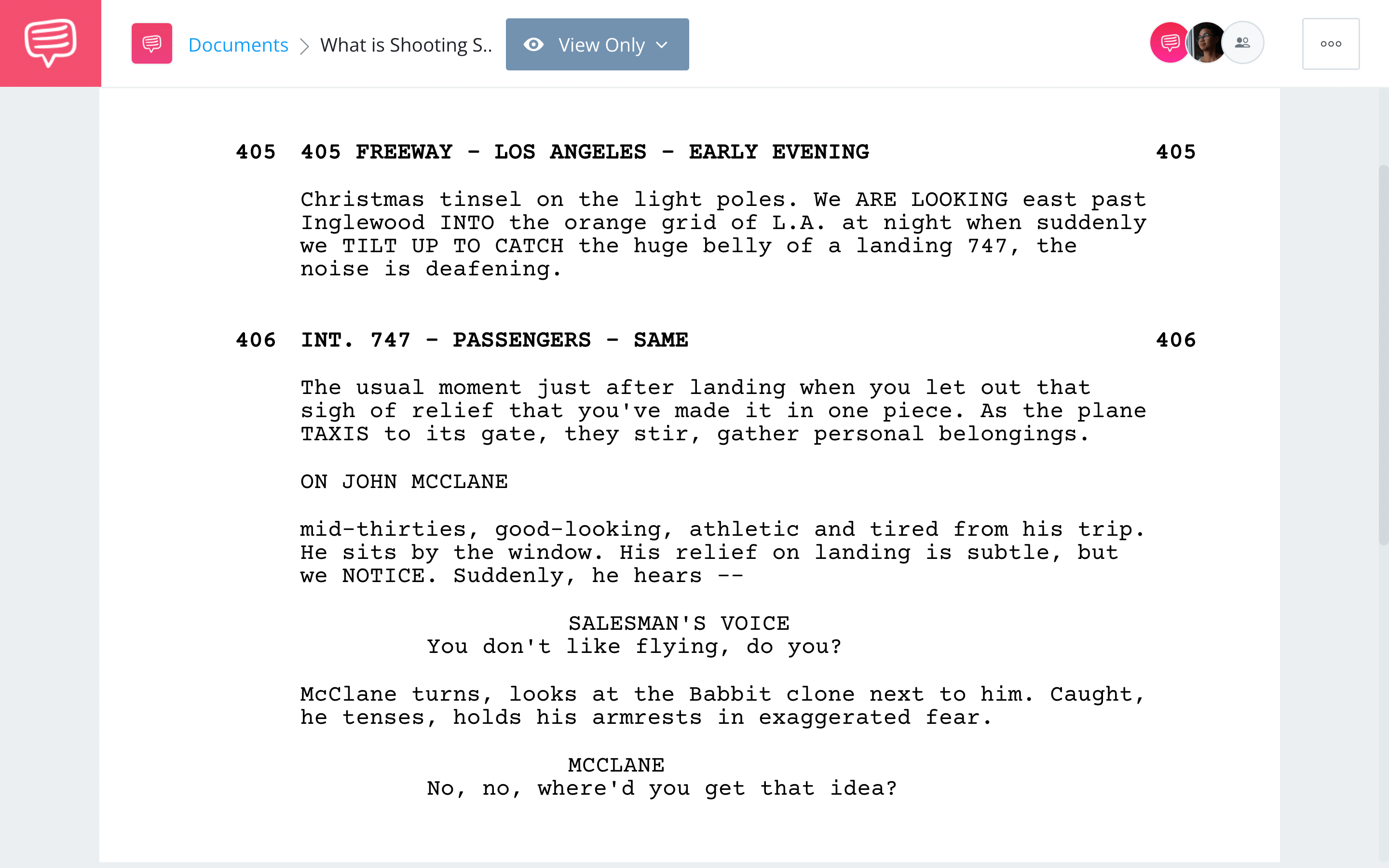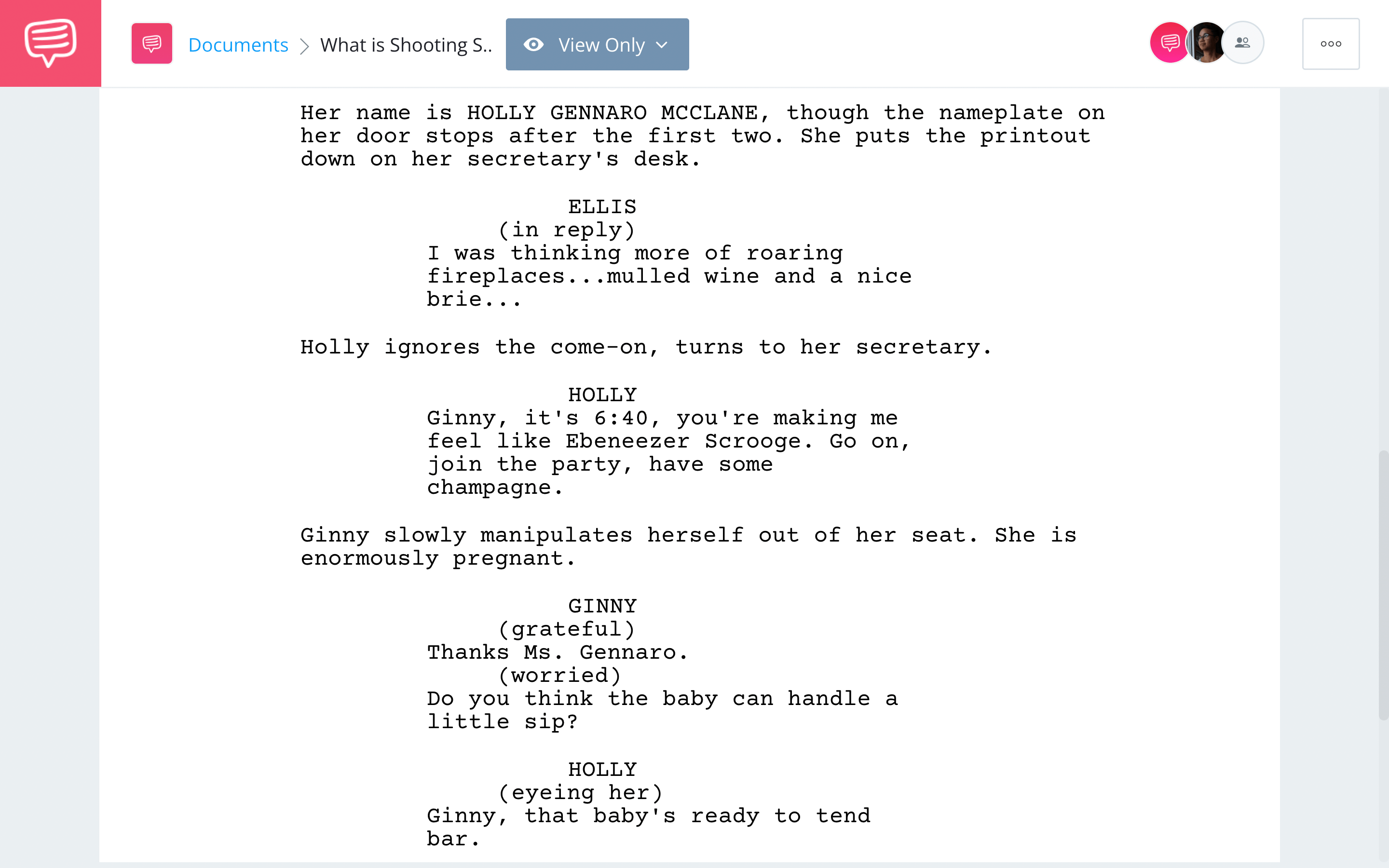Screenplays, as well as script treatments, are well known as the foundation for any movie. People in the industry also know that there are so many screenplays out in the wild that have not been produced. But what about those that are chosen for production? Well, they evolve to become shooting scripts. What is a shooting script, you ask? There is a fine line that exists between what is a regular screenplay and what is a shooting script. We’re going to make sure you have a strong understanding of the differences with plenty of examples.
Define Shooting Script
How do we define shooting script
We know you’re eager to look at a shooting script example or two, but before we get into that here, we want to define shooting script first.
SHOOTING SCRIPT DEFINITION
What is a shooting script?
A shooting script is the version of a screenplay that is used during the making of the movie the script is based on. The original screenwriter often has no involvement with a shooting script, as the director and others create it to suit their filming needs. Added to the shooting draft are scene numbers and notes for specific shots or camera movements. An easy way to look at a shooting script is that it’s a heavily annotated version of the screenplay made to better assist the filmmakers during production.
Shooting Script characteristics:
- Including scene numbers, along with page numbers.
- Listing the amount of revisions the script has, and which version of the script is being used.
- Providing necessary information for the filmmakers, such as props, camera directions, and actions.
There are many options in terms of screenwriting software for creating your own shooting draft, and StudioBinder is among them. We’ll be mentioning our software here and there throughout this article, but before that, check out the quick video below for a demonstration.
What is a shooting script • Shooting script format sample
One notable thing about shooting scripts are the revisions that might inevitably happen. Screenplays can come with multiple revisions, and those revisions will have a color associated. These are call script colors. Call it a standardization of the process, but there are specific colors often brought up, some of which we will come across in our examples.
Shooting Script Template
Numbers and revisions
Shooting scripts use numbers more than a traditional script might. The video below can fill you in on the main differences between them and a spec script (like a screenplay).
What is a shooting script
While any kind of script will likely include page numbers, only a shooting script needs to include scene numbers. Let's open StudioBinder's screenwriting software to take a look at a quick example.
Shooting script format sample
Scene numbers in a shooting draft not only help dictate the narrative order, but they also list out the actual scenes in question. This means, for example, you will know that the “gray building set” is for scenes 4, 25, and 66. Additionally, a production will always try to shoot all those individual scenes at once (if they share the same location), to save time and money.
No matter how ambitious or simple your shooting script is, there is a high chance you will have to deal with revisions. That’s the other place numbers come in handy, as their role evolves during revisions. You can see in the example below that there is scene 8 and 8A; the 8A indicates a continuation of scene 8 that was added in a more recent revision.
What is a shooting script pdf
You can also see how importing your script into StudioBinder divides everything out very nicely by scene numbers, including any continuations or revisions.
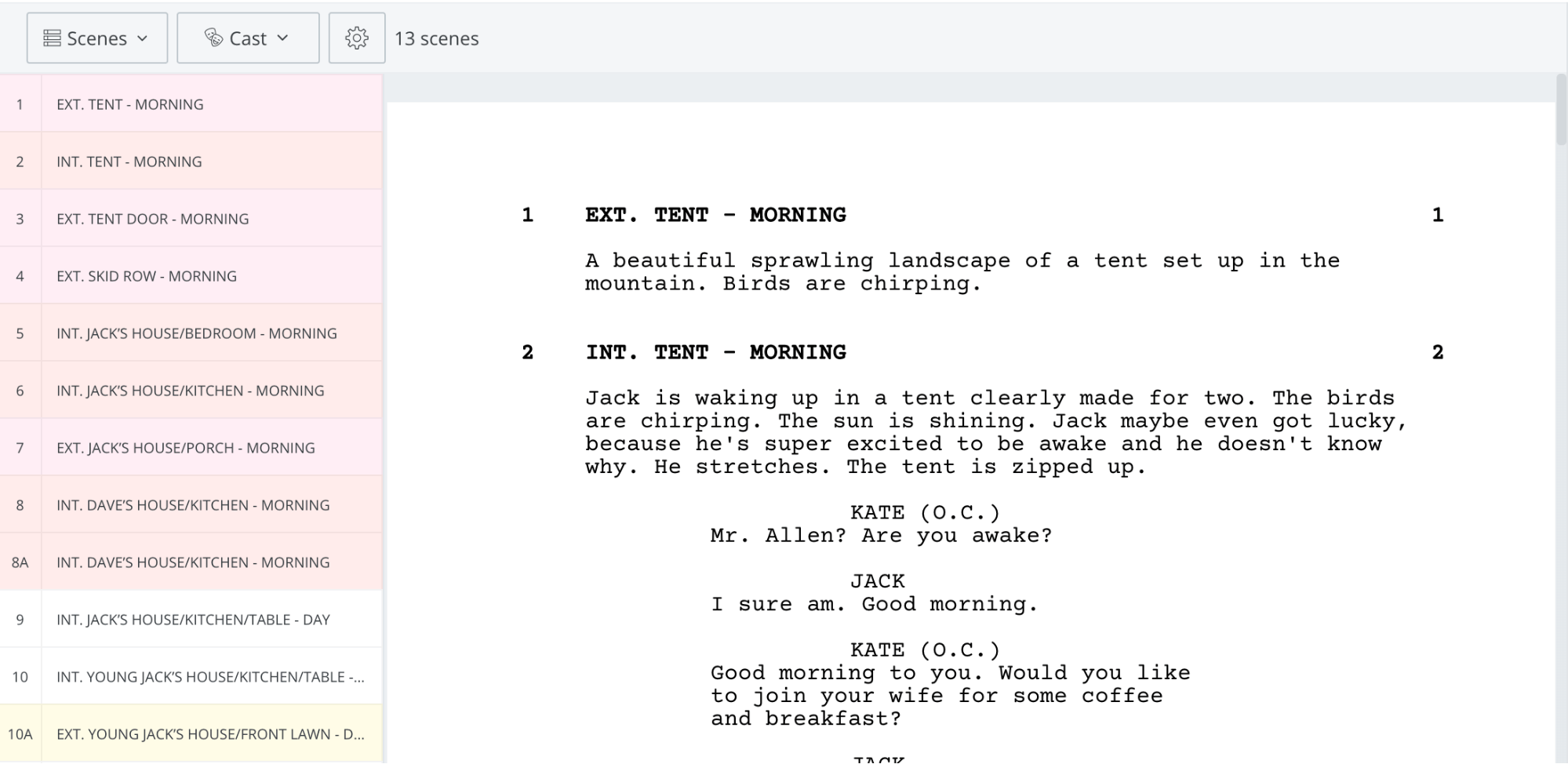
How to do a shooting script
If you ever see a shooting draft that, for example, says scene 20, A20, and 21, that A20 is an additional scene that was inserted in a later revision. It has no connection to scene 20, hence the A before 20. If the script read 20, 20A, and 21, then 20A would be a continuation of scene 20, instead of its own new scene, as A20 indicates.
This “number and letters” system is done because whole scripts are rarely changed or revised. Additions and changes of various sizes can occur, so instead of making everyone scrap their already circulated script, they just make some adjustments and add them to the already-in-use script.
This is also why some shooting scripts have page or scene numbers that are OMITTED but still “part” of the script.
If you’re reading a legitimate shooting script, you will also notice how many revisions it has had. This can be seen on the title page of a script, but also throughout, such as where page numbers are.

How to do a shooting script
Any script revisions are noted by a standardized set of colors, starting with white, then blue, pink, yellow, green, and more. On set, any changes will be printed in these colors, but online or with scans, you have to rely solely on the revised text provided.
Related Posts
Shooting Script Example
Directions and specifics
The most notable thing about a shooting script vs a screenplay is the use of what might be comparable to “stage” directions. By this we mean shooting scripts will make extensive use of directions from the director for the cinematographer and others on the set.
Directions in the script include how the camera should operate, i.e. a close-up or wide shot. These would be shortened to CU and WS. Directions also include cuts and editing transitions, often labeled in all caps. Below is an example from the Die Hard screenplay.
Shooting script example • Die Hard
Directions are also for the performances, as a shooting script can help dictate how an actor should act in a scene. A shooting draft may state, in-between the dialogue, how the character is supposed to react or feel. Once again, here's an example from Die Hard.
Shooting script template
You might also notice that certain words (that are not directions) are in all caps. This makes it easier for different departments to know when a specific sound effect or prop is being used, as well as when certain characters appear.
Shooting script example
The specification of directions, sounds, actions, and props are among the most notable parts of a shooting draft. Along with numbering the scenes, it makes shooting a movie that much more manageable.
One more thing to mention is that the original screenwriter is rarely ever on set during the production of a film. This could already be implied by the fact that a shooting draft is done after a screenwriter has provided their screenplay.
This of course depends, since someone on the set — director, producer, actor — could have worked on the original screenplay, which is common for films by writer-directors.
Up Next
Understanding Script Coverage
Now that you have an idea of what a shooting script is and how to put one together, make sure you also know what script coverage is. This article will cover what to expect when dealing with script coverage, along with a template you can use for your scripts. It’s just one of many processes that goes into presenting your screenplay to potential buyers.
